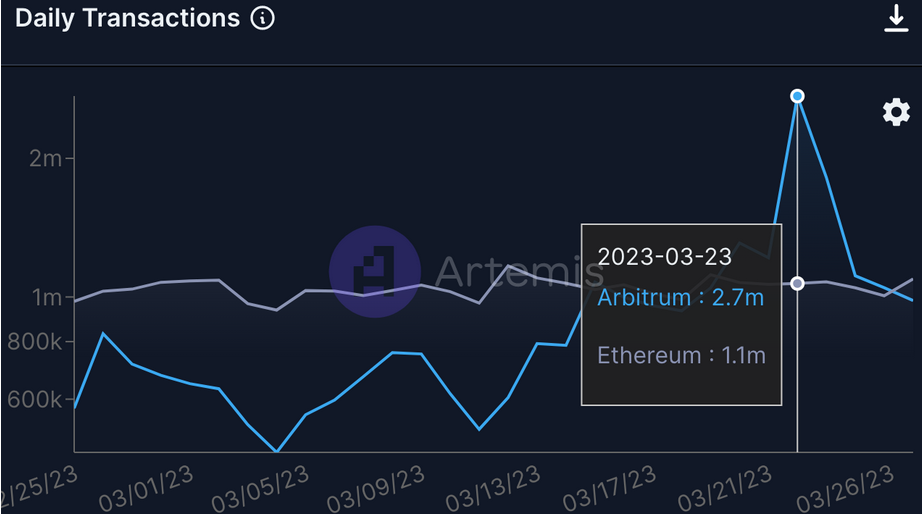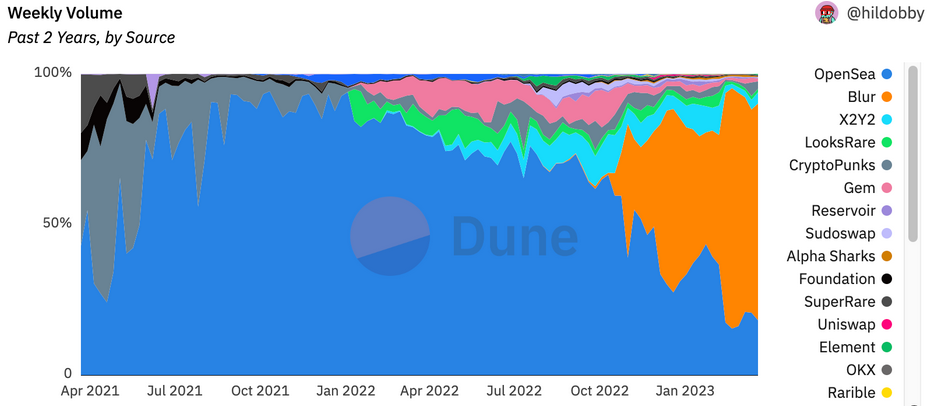This article comes from Bankless, the original author: Jack Inabinet, compiled by Odaily translator Katie Koo.

, the original author: Jack Inabinet, compiled by Odaily translator Katie Koo.
The launch of ARB is a big moment for cryptocurrencies and Ethereum, and a huge milestone for the airdrop community. How can the project party after ARB provide token incentives for early adopters? Today, let’s dive into the future of airdrops.
secondary title
Airdrops remain the preferred mode of rewarding the community and decentralizing protocol ownership. Gone, however, are Uniswap-style retroactive airdrops. A simple trade or LP position will no longer qualify you for the airdrop. Even the most basic airdrop method now takes airdrop grading criteria and anti-Sybil mechanics into account.
While Arbitrum is undoubtedly the hottest airdrop in 2023 (so far), its airdrop approach still leaves something to be desired from a technical performance and token distribution standpoint. In this article we will dissect some of the pitfalls of ARB airdrops, and explore how other star protocols have iterated on past airdrops while coordinating the community, attracting liquidity, and minimizing network disruption.
On March 23, more than 1.16 billion ARBs were airdropped to 625,000 independently active wallets, with distributions ranging from 625 to 10,250 tokens per address. The majority of claim activity was advanced, with 52% of distributions claimed within the first four hours. On ARB launch day, Arbitrum saw extremely high levels of on-chain activity, setting an all-time record of 2.7 million transactions across 612,000 active addresses, 145% and 32% higher than Ethereum, respectively.

Source: Artemis
image description
Heavy traffic crashes the Arbitrum sequencer and causes RPC endpoints between public providers to fail. While Arbitrum's technology is currently state-of-the-art, offering higher throughput and call data compression via Nitro, in the hours following the ARB airdrop, the limitations of blockchain technology start to show up.
Arbitrum's Web2 infrastructure couldn't handle the load either. The recommended claiming portal arbitrum.foundation and blockchain explorer Arbiscan both went down within hours of the ARB launch. Arbitrum users and airdrop claimants immediately tweeted their displeasure.
secondary title
Airdrop iterations
The retroactive airdrops (rewarding users who have already interacted with the protocol or product) and simple airdrop standards in 2022 can no longer keep up with the speed of industry development. Today's hottest protocols recognize the potential of airdrops and are devising novel distribution strategies to maximize their potential.
It is undeniable that airdrops are the largest "fee" incurred by many protocols, so how do they maximize value?
The main goal of any airdrop should be to fairly reward various on-chain activities, working towards distributing tokens to those users least likely to sell and most likely to participate in governance. Targeted distribution criteria are key to this pursuit.
Protocols have increasingly begun to reward many types of on-chain interactions beyond basic usage.
Optimism’s choice to distribute OP tokens to DAO voters, multisig signers, and Gitcoin L1 donors aligns the token holder with the chain’s retroactive public goods funding direction from day one.
Sudoswap distributes SUDO to holders of the “0x mon” NFT designed specifically for the project team, providing additional rewards for those who have already made an economic commitment to the Sudoswap ecosystem.While Arbitrum provided the DAO with a discretionary token, its rollup missed the opportunity to directly reward good citizen behavior in the ecosystem, seemingly ignoring NFT holders of the “Enter the Odyssey” event. While airdrops are not currently intended to fully replace the industry standard of transaction value and token usage, additional ways can be used to reward desirable user behavior. For example, Arbitrum could include governance participation in its criteria for receiving airdrops.
There are glaring flaws in Arbitrum's Sybil attack detection. An analysis by X-explore found that approximately 4,000 Sybil communities were included in the ARB airdrop, controlling 150,000 addresses eligible to claim 253 million tokens (21% of the ARB user allocation). Three prominent Sybil communities claim over 4.2 million ARBs.
While an “anti-Sybil mechanism” is not a “perfect” solution, lowering the bar and rewarding various behaviors that characterize good on-chain user behavior can help limit the amount of tokens distributed to Sybil farmers. Setting additional criteria helps manage airdrop distribution and provide tokens to addresses that contribute to the ecosystem.
secondary titleAirdrop Improvements
Pull-style airdrops, which require token recipients to claim the airdrop, seem attractive to many projects. Avoiding the gas fee, carrying out the claim activity provides an opportunity for the agreement, so that the project party can dissuade the "sell-as-you-go" Holder by promoting governance, just like the claim process of Arbitrum.However, given the current limitations of blockchain technology, a network-wide pull airdrop could create chaos on the chain, hamper the chain’s ability to process transactions, and create a complicated token claiming experience.
Optimism’s secondary airdrop used a push approach to “silky-smoothly” distribute 55 million OPs to over 33,000 uniquely active addresses without disrupting the wider network.
Since launch, Blur has publicly advertised its intent to airdrop tokens to various user categories, and much of the initial adoption in the NFT market has come from users trying to maximize their airdrops. Currently, Blur handles 72% of weekly NFT trading volume, due in part to pre-announced its second-season airdrop.

Source: Dune Analytics
image descriptionSource: Dune Analytics
Despite the success of Blur’s strategy, Arbitrum still insisted on token distribution based only on users’ past engagement activity, missing the opportunity to attract more users and TVL to the chain.Blur’s dominance in NFT trading may fade as incentives finally dry up, but the pre-announced airdrop has helped Blur “stand its ground” against giants like OpenSea.Optimism and Sturdy Finance are among the protocols that use this approach, each distributing a portion of tokens to users of competing protocols.
Summarize
secondary title
Summarize





